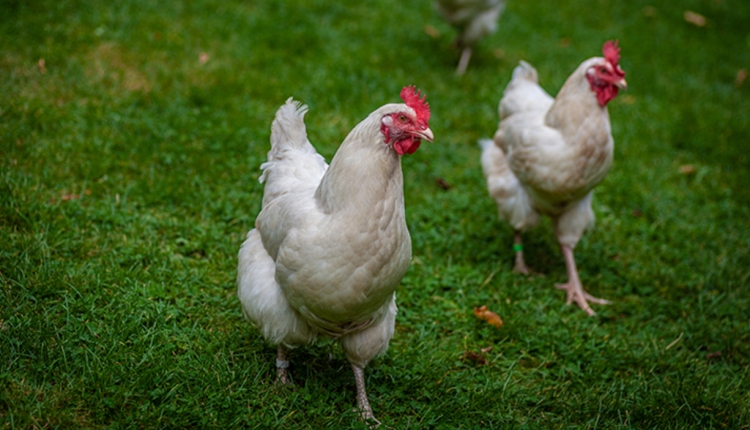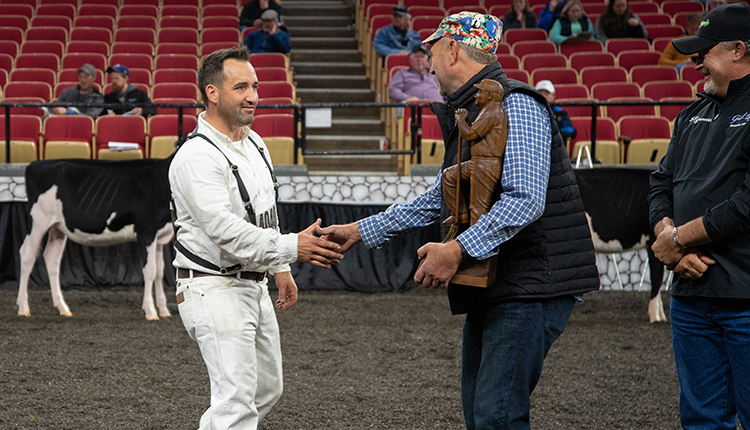 "You can't just go out there, feed them and squeeze them," was one of the many great financial one-liners Gary Sipiorski shared with a packed audience at the Great Lakes Regional Dairy Conference in Frankenmuth, Mich., on February 8. "What is your cost of production?" he asked dairy producers noting that we have seen the greatest swings in milk prices in the past six years.
"You can't just go out there, feed them and squeeze them," was one of the many great financial one-liners Gary Sipiorski shared with a packed audience at the Great Lakes Regional Dairy Conference in Frankenmuth, Mich., on February 8. "What is your cost of production?" he asked dairy producers noting that we have seen the greatest swings in milk prices in the past six years.Those producers that have a firm grip on their financials are more likely to turn a profit. Citing dairy farm accounting numbers from Nietzke and Faupel, Sipiorski pointed out that the top one-third of dairy producers cleared $2.40 per hundredweight in 2010 compared to $1.17 for all herds. The spread wasn't as great in 2011: top one-third $4.43 versus $3.41 for all producers. However, in 2012, the gap widened once again.
"Using data for January through September of 2012, the top one-third netted $2.04 per hundredweight while all 66 producers in the Nietzke and Faupel group earned 58 cents per hundredweight," said the Vita Plus dairy development manager.
"Not a big deal?" he asked. "If you have 100 cows that average 24,000 pounds of milk, the top-third earned $48,960 (100 cows @ 24,000 x 2.04)," he told those in the audience. "When looking at all herds, the net profit was $13,920 (100 cows @ 24,000 x 0.58), a difference of $35,040 for every 100 cows."
"There are three ways to pay bills: make more money, reduce expenses or go bankrupt," he said when discussing impacts on the bottom line. "Of course the federal government has one more, print more money."
Our nation's debt continues to rise. "Every American alive owes $50,000 to the U.S. Treasury," said Sipiorski who went on to say that $50,000 figure was just to cover national debt. "We are among the countries that spend 10 to 15 percent over our budgets," he said, explaining that debt levels continue to swell. "If interest rates rise, how will that impact the federal government's debt? What about your farm's debt?" as he then urged dairy producers to review farm financials and then lock in the current low interest rates.
Farming has a great future. The world's population continues to grow.
"In 1964 there were 0.75 acres of tillable land per person in the world . . . today there is 0.22 acres per person," said Sipiorski as he explained that some estimates show even fewer acres per person. "The only way 30 percent more people can be satisfied in the future is an increase in productivity."
"China and Japan are among the countries that don't produce enough food for their populations," he said. "Japan imports 50 percent of their food. Meanwhile, China has 22 percent of the world's population; 7 percent of the tillable land; 3 percent of the fresh water and 36 percent of the rare earth elements," said Sipiorski as he pointed out China holds some of the world's largest reserves of lithium used in cell phone computer batteries. Countries will need to trade products to serve their citizens, that includes food.
There are definitely opportunities for expanded food production. "The business of feeding people will not be handed to U.S. agriculture," he said. "It will have to be earned and competed for."








